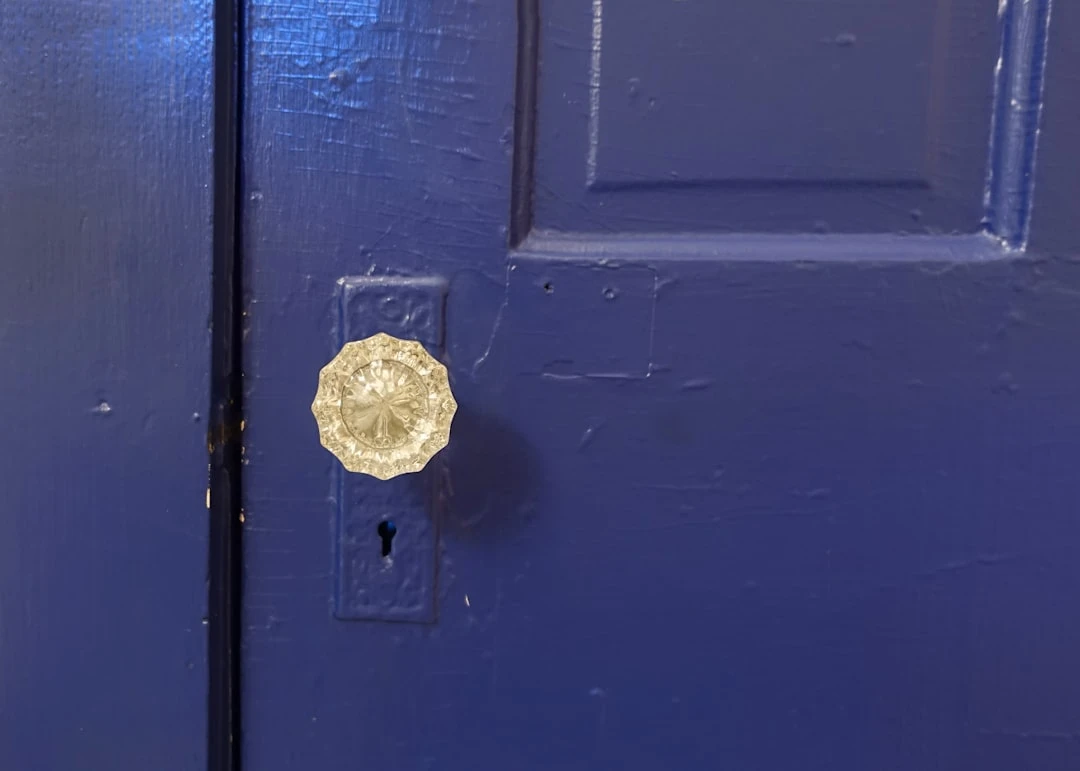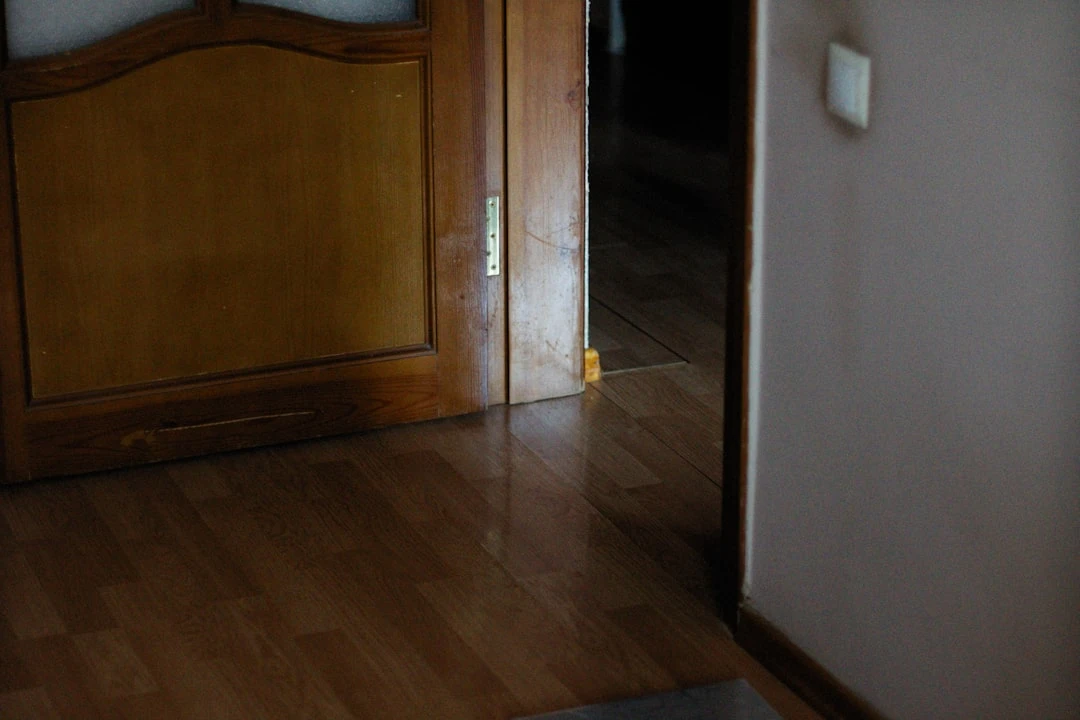How to Fix Squeaky Doors and Floors

Does every step or door opening wake up half the house? Good news: you can eliminate most squeaks yourself at home, quickly and without expensive tools.
Common causes: why squeaking happens at all
Squeaking occurs mainly because two surfaces move against each other and create friction. With doors, the classic culprit is loose or worn hinges, a warped frame, or a swollen door. On floors, loose fasteners, wood that has changed due to dryness or moisture, an uneven base, or flooring material under stress due to missing expansion gaps create the sound. In Estonian homes, air humidity fluctuates quite a bit throughout the year, which causes wood to "work" and makes squeaking seasonal—more in winter, less in summer.
Required tools and materials
Usually a screwdriver or cordless drill, a small plane or sandpaper, wooden screws (often longer than existing ones), wood glue and wooden dowels (or plugs) to restore worn screw holes will suffice. You may also need fine talc powder or graphite for lubrication, wood filler and finishing materials, adhesive if needed, a syringe for injecting glue into parquet seams, shims or thin veneer strips to stabilize loose joints, and a stud finder if you're fastening floorboards to the substructure.
Removing door squeaks step by step
Start with diagnosis. Open and close the door slowly and listen to whether the sound comes from the hinges, the frame, or from the door edge and floor/door jamb contact. Work in clean and dry conditions.
First, tighten the hinge screws. Loose screws make noise. If the screws won't grip, remove them, drip a bit of wood glue into the hole and push in wooden toothpick pieces. Let the glue soak in a bit, then screw in longer wooden screws that reach into harder wood.
Lubricate the hinge pin. Remove the door from the hinges, clean the pin and gently lubricate with dry graphite, a paraffin candle, or a drop of machine oil. You should avoid thick oil, which collects dust and can bind dirt.
Check if the door rubs. If the upper or side edge scrapes, mark the contact point, remove the door leaf and plane off a very thin layer. Try it again. If needed, finish the edge to maintain moisture resistance. If the door rubs against the frame, tightening the frame screws or adding longer screws toward the bearing wall might help, which pulls the frame back into place.
Stabilize the frame. If the sound comes from between the frame and wall, tap thin wooden wedges between them, fix them and cover with molding. For a loose strike plate, tighten the fasteners or fill worn screw holes as above, so screws don't strip out of soft wood.
Add weatherstripping. Worn door weatherstripping causes clicking and vibration. Refresh the glued attachment or replace the weatherstripping with a new one that dampens micro-movement.
Wood and plank floors: precision repair
Listen and mark the squeaky spot. If the sound is localized, step on the spot firmly and feel if the board moves. If yes, you need firmer fastening.

Fasten boards to the joist. Use a stud finder to locate the support. Drill pilot holes, then fasten the floorboard to the joist with a thin wood screw. Sink the screw head slightly below the surface, fill lightly with wood filler and finish. If the floor is finished, choose a filler shade close to it.
Glue and wedge. If a board rocks in a lap joint, squeeze a bit of wood glue between them and press a thin wooden wedge to stabilize the joint. Wipe excess glue immediately. For temporary softening, you can sprinkle talc between the boards, but a permanent solution is mechanical fastening.
For stairs. Stairs often squeak from contact between the tread and riser or between the tread and side rail. Inject wood glue into the joint, add a wedge and fasten from below with thin screws. Work symmetrically to preserve appearance.
Laminate and vinyl: freeing movement for silence
Laminate squeaks usually occur from missing expansion gaps or an uneven subfloor. Remove the perimeter molding, check if the flooring material is under tension against the wall. Carefully cut a 10–12 mm expansion gap, reinstall the molding. If squeaking persists, the subfloor may be uneven. For localized squeaking, sometimes sprinkling talc into panel seams helps, but leveling the subfloor is a permanent solution.
With vinyl/LVT, squeaking is rare, but an uneven leveling layer or sand grains can cause noise. If it's a floating floor, also check expansion freedom; with glued vinyl, repair often requires removing individual planks and cleaning the base.
Parquet: injecting glue and spot fastening
With glued parquet, squeaking usually means the glue has come loose locally. Clean the seam, drill a micro hole at the seam edge, inject wood glue with a syringe or special applicator into the joint, press the panels together and apply weight for 12–24 hours. Clean glue residue immediately with a damp cloth. If the parquet is floating, review expansion gaps, moldings and subfloor. With weak subfloor, leveling layer repair gives permanent silence.
Between concrete base and surface: cushioning and fastening
If wood veneer or floorboards are on concrete, squeaking can be caused by loose mechanical fastening or "pumping" of the contact surface. Strengthen fasteners with appropriate concrete screws, using pilot holes and dust removal, or add a thin felt strip/mounting tape to the loose contact to dampen micro-movement. Avoid point repairs randomly; mark the problem area and treat it as a whole.
Troubleshooting: when the noise won't go away
If tightening screws didn't help, they probably didn't hit the joist. Use a stud finder and correct the location. If the sound moves around, the base may be wobbling over a wider area; in that case, consider adding more fasteners or leveling the subfloor.
Moisture is squeaks' best friend. Keep indoor relative humidity between 40–60%, especially during heating season. If needed, use a humidifier or dehumidifier. Regular and proper maintenance reduces repairs; also see our practical guides on cleaning and humidity management and how to avoid mold in the bathroom—persistent moisture encourages wood deformation and noise.
When working in rental homes, always coordinate planing or sanding with the owner. Smaller tasks, like tightening hinges or adding talc, are usually safe and reversible.
Preventive maintenance: a quiet home year-round
Tighten door and cabinet hinges every 6–12 months and gently refresh hinge pins with graphite or paraffin. Check floor perimeter expansion gaps and secure molding attachment in fall and spring. Keep sand and abrasive dirt controlled at entry points with door mats and regular cleaning, because micro-particles loosen both surfaces and joints, making them squeak.
In the kitchen and bathroom, keep humidity rise under control—if you want, read more about simple home appliance maintenance and cleaning, and regularly perform washing machine cleaning. You'll find detailed tips on mold prevention in our blog as well.
When to call a professional
If door or floor squeaking is accompanied by structural movement, visible cracks, sagging, moisture damage, or fungal damage, it's wiser to involve a professional. If you live in a new home, check warranty terms—you can contact the developer if the issue is covered by warranty; if you wish, also see recent new developments and seek advice if needed.
In apartment buildings, where the problem is systemic (stairwells, load-bearing structures, extensive leveling work), the solution may require the building association's budget—collected steps and options are consolidated in the article apartment building renovation loan.
For larger renovation projects, such as complete replacement of an old wooden floor or stair renovation, definitely involve a professional.
How Kinnisvara24 can help
A quiet and well-maintained home increases both quality of life and property value. If you plan to change homes, start with a convenient search—a step toward a new beginning is just a few clicks away: view apartments for sale here.
If you're drawn to new, energy-efficient homes, explore new developments in tallinn and new developments in harjumaa. Get professional support from real estate agents. Find inspiration about the market and Tallinn neighborhoods in our apartments in tallinn article.
Bringing silence to your home is usually simple if you proceed systematically: find the cause, choose the right approach and secure the result. If you need a fresh start or a partner for the next step, come to Kinnisvara24's search and find the right option for you today.




